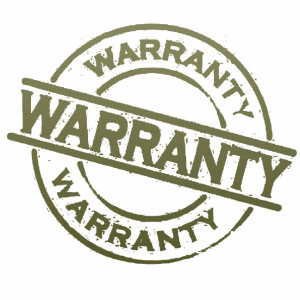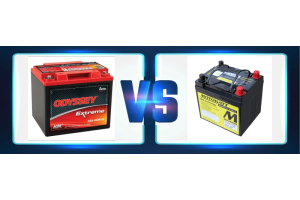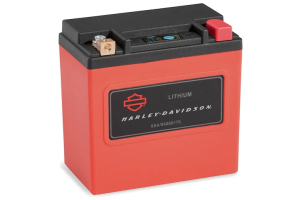Does Your Bike Battery Need a Warranty? How Do You Test it?
 Warranties can be the bane of consumers and merchants alike, especially motorcycle battery warranties. For the merchant or manufacturer it is a necessary evil that requires time and resources for seemingly no commercial gain—looking only from the vantage point of the warranted transaction. The consumer dreads the idea of having to prove the case, possibly being transferred to multiple people, having to send the item back for inspection and then on top of all that pay for shipping both ways! There are horror stories of companies reneging on their obligation to replace or repair defective merchandise. Or they make the process so cumbersome and time consuming people just give up. But there are also consumers that expect the world to bow at their every demand, have outlandish expectations or are the undisputed battery expert with zero years’ experience. Of course these examples are the extreme and not the rule. So what can merchants and consumers do to meet somewhere in the middle?
Warranties can be the bane of consumers and merchants alike, especially motorcycle battery warranties. For the merchant or manufacturer it is a necessary evil that requires time and resources for seemingly no commercial gain—looking only from the vantage point of the warranted transaction. The consumer dreads the idea of having to prove the case, possibly being transferred to multiple people, having to send the item back for inspection and then on top of all that pay for shipping both ways! There are horror stories of companies reneging on their obligation to replace or repair defective merchandise. Or they make the process so cumbersome and time consuming people just give up. But there are also consumers that expect the world to bow at their every demand, have outlandish expectations or are the undisputed battery expert with zero years’ experience. Of course these examples are the extreme and not the rule. So what can merchants and consumers do to meet somewhere in the middle?
When considering a motorcycle battery purchased over the World Wide Web, how does one go about the process of obtaining a warranty? Twenty years ago you would have taken the battery to your local merchant and they would run some tests to determine what went wrong which would validate or invalidate the warranty claim. But when there are hundreds or perhaps thousands of miles between the merchant and customer how do you effectively and quickly process a warranty? Does the consumer need to supply information pertaining to how the battery failed or does the merchant simply take them at their word?
“Dude the battery just stopped working; I know it’s bad! I've been riding for over 30 years and am an electrical engineer; this battery is dead, trust me!”
We have heard this line or variations of this statement more times than we can count. It is always amazing how many of those electrical engineers seldom have any idea how to test and respond to what their battery is telling them. If a person is NOT actively working with batteries on a regular bias, will they truly and or intuitively know the cause of the perceived failure? Can they rely on what they think they remember their grandpa showing them 50 years ago?
Or is it better asked this way: How many people suspect the battery has failed because they do not understand what has transpired for the battery to be in the condition it is in? You know the cause and effect. If action ‘A’ occurred; response ‘B’ is expected. There are many aspects of electricity that can make a perfectly good battery appear to be bad. There are also many well-meaning people that do not have a deep or even a basic understanding of lead acid battery mechanics. This combination can lead to misunderstandings and volatile emotional responses. Consider these two situations below.
Two Funny Yet Not So Funny “Warranty” Stories
They Said it has a Dead Cell…
The other day we received a motorcycle battery back. It was unexpected and did not have a Return Merchandise Authorization. Inside the box was a note on the original packing slip indicating the battery would not charge and a replacement would be appreciated. It also indicated that he had taken the battery to Advance Auto Parts and they had tested the battery and told him it had a dead cell. "It was time to buy a new one," they said. Luckily he had purchased a MotoBatt motorcycle battery which comes with a full two year replacement warranty. He still had approximately 6 months left on the warranty.
Aside from the lack of communication letting us know he was sending a battery back, it seems like a pretty solid warranty case, right? He was having an issue where the battery lost its charge. He had a third party big box store analyze the battery and they supposedly tested and confirmed what he already suspected.
Well, it was not so cut and dry. The battery arrived at our facility with a voltage of 13.1 volts. The notion that there was a dead cell was immediately debunked. One could surmise it probably did not have an internal short. After all it just spent a couple days in transit and maintained its very healthy voltage. We initiated a carbon pile load test and the result showed it sustained a load voltage of 10.5 volts. In fact it held this voltage three times in a row. We then placed it on a manual carbon pile load tester and increased the load value to try and reveal any abnormalities. It passed with flying colors! The customer was called and arrangements made for the battery to be sent back.
The Battery is Utterly and Completely Dead
This next example is from a gentleman that insisted his battery was toast. He said it had zero volts! We asked him if he had completed a parallel charge (we will elaborate on that in part two) to which he replied “yes and it didn’t work.” Knowing what we know about batteries and yes, in this case, somewhat suspicious of the buyers’ story, we asked to get the battery back for testing. For the record, under normal use, it is very difficult to get a battery to 0 volts.
Sure enough the battery arrived measuring 0.01 volts! That voltage is way too low for a charger to recognize so we placed it into a parallel charge. The next day it read 13.2V and load tested at 9.8V. The top line voltage was phenomenal but voltage under load was not the greatest but also was not terrible. At this point we know the battery does not have a dead cell (or six dead cells as he suggested) and it leads us to believe that it does not have an internal short. We then placed it on the XC100-P desulfating charger for a couple days. Immediately after which we let the battery sit disconnected from everything for a couple more days. It held voltage above 12.8V and maintained a load voltage of 10.0V in three back-to-back tests. It’s a miracle right? A dead battery came back to life! No actually it is simple physics.
The Take Away: Proper Motorcycle Battery Testing is Required.
I wish I could say these stories were unique, but sadly they are not. They occur week after week, month after month, year after year. On the one hand you have morons working the counter at these big box stores telling people their battery which is holding 13 volts has a dead cell. (Makes you wonder if they are truly that stupid or instructed to intentionally mislead a customer in order to sell them a replacement.) While on the other hand customers insist their severely discharged battery is a lost cause. If it is a lost cause, how is it that we can revive these batteries? We use the same off the shelf, consumer grade smart chargers and cables the vast majority of the time. Is it because they don’t actually try the parallel charge or perhaps stop the test after an hour thinking this ‘snake oil’ should have worked by now?
Regardless the scenario, it is imperative, that we, as the merchant do everything in our power to best represent to the manufacturer the details relating to a battery warranty. At the same time it is equally important to work with our customers to make the process as easy and factual as possible. Sometimes this means giving customers the benefit of the doubt, especially if they have graciously responded to our requests. The key aspect is that the motorcycle battery has to be properly tested and vetted.
Did you know that 35-40% of Impact Battery warranty requests have been fixed and determined the battery is fine. Another 5-10% has been denied because of obvious external factors, whether stemming from mechanical system failure or accidental or well-meaning over charge scenarios. In either case, the batteries are no longer rectangular in shape. They are bulging and round. Also, included in this group are crazy situations where something has punctured the battery or a customer tried prying off the top of a sealed AGM battery to add water. If we just took the customers initial word without any system to verify the report about 50% of the requested warranties would have been granted and falsely presented to the manufacturer. And if we were being completely honest a good percentage of the approved warranties were probably linked to sulfation making them a preventable failure. So despite the blow-back we sometimes get, from buyer and maker, we will endeavor to represent everyone involved honestly. We will educate when appropriate. We will tow a hard-by-the-letter-of-the-law line when assailed. And we will be gracious where we can.
The next two segments will cover the information we are required to obtain to fill out the manufacturer’s warranty paperwork. We will better define what a parallel charge is and how to correctly set one up. As well as what to expect should you ever find yourself needing a motorcycle battery warranty.





